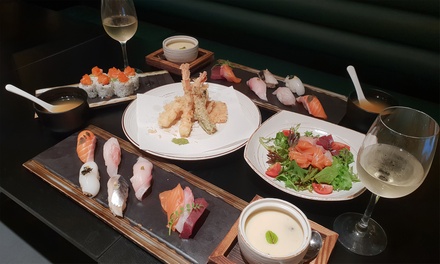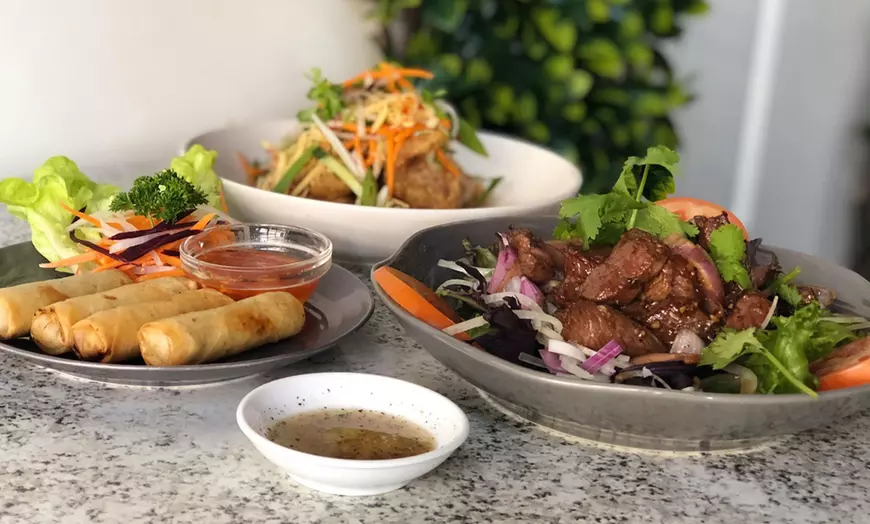【《We Chinese in America》Media Editor Tang Zhao, May 1, 2022】Per County of San Diego Communications Office , the County Board of Supervisors on April 26 received an update on the significant efforts underway to increase the regional supply of affordable housing. (Valley Senior Village in Escondido is expected to be completed by summer 2023. Image from County of San Diego Communications Office)
Since 2017, the County has invested $175 million towards the creation of affordable housing. The funds have leveraged about $1 billion in local, state and federal monies, as well as private funding, which are being used to create 3,390 affordable housing units that have housed and will become home for more than 35,000 San Diegans.
The wide-ranging efforts include 44 developments—10 completed, 13 under construction and 21 future projects—in 24 communities throughout the region, including eight County excess properties and four developments in unincorporated areas of the county.
The affordable units will provide housing for low-income families, seniors, veterans, developmentally disabled people, transition-aged youth, people who are homeless and people experiencing homelessness and have serious mental illness.
To date, 10 developments have been completed, resulting in 835 affordable housing units that have become home to over 2,900 people throughout the region.
“Completed developments presented today are just the first fruits of the affordable housing efforts we started five years ago,” said David Estrella, director of Housing and Community Development Services at the County Health and Human Services Agency. “Housing development takes time. As a result of the these affordable housing efforts, the County’s pipeline of affordable housing has grown into a robust source of ongoing housing production and positive economic impact for the San Diego region.”
The 13 developments under construction are expected to create over 950 affordable housing units and are expected to be completed between now and December 2024.
Furthermore, the 44 developments could generate 3,400 construction jobs and about 1,000 permanent property management and maintenance positions.
About $42 Million in Housing Funds Requested for Region
The Board also directed the County to apply for nearly $30 million in additional No Place Like Home funds from the state to house people experiencing homelessness and who have serious mental illness.
This fourth and final allocation of No Place Like Home funds will bring the total for the region to nearly $123 million.
The Board also opted to allocate $12 million in American Rescue Plan Act funding for permanent supportive housing units for extremely low-income households.
(Source: County of San Diego Communications Office)
This website has a free subscription function, please enter your email address and name (any nickname) in the upper right corner of the page. After subscribing, you can receive timely updates of the website. I hope that new and old readers will actively subscribe, so that we have the opportunity to provide you with better services
Please click: Home (wechineseus.com) for more news and content on this website
Follow The Chinese Media's Twitter account: https://twitter.com/wechineseinus
Follow The Chinese Media's Facebook account: https://www.facebook.com/wechineseinamerica/
【《We Chinese in America》Media Editor Tang Zhao, April 30, 2022】 Per County of San Diego Communications Office, to align itself with the state, the County Health and Human Services Agency is now using the California Immunization Registry (CAIR2) to record the number of San Diegans who have received COVID-19 and other recommended vaccines.( COVID Recording Tool image from Polk State College)
The switch occurred April 25 and was required by the California Department of Public Health so that most health care systems across the state are using the same software to record COVID-19 vaccinations and all other vaccines administered locally.
CAIR2 is also secure and confidential. The system ensures that immunization data are accurate and complete and allows for immunizations records to be portable and follow patients as they change providers or move from one county or city to another.
The transition to CAIR2 resulted in minor changes in vaccination data in several categories, including age, gender and ethnic breakdowns, as well as the number of people vaccinated in different cities and ZIP codes.
“Because the two systems have slight differences, minor changes in our local reporting were anticipated,” said Wilma J. Wooten, County public health officer. “County staff have been working closely with the state as we made this transition, as well as manually verifying data and records in both systems so that they remain aligned.”
County to Report COVID-19 Data Mondays and Thursdays
Also, in alignment with the state, starting in May, the County will move to twice weekly reporting of COVID-19 data, with updates occurring on Mondays and Thursdays, except during holidays
Updates to COVID-19 data dashboards will be made Thursdays with data through the previous Saturday.
Also, the County Communications Office will publish and distribute its weekly COVID-19 update on Thursdays.
Vaccination Progress:
- Received at least one shot: More than 2.94 million or 93.4% of San Diegans age 5 and older are at least partially vaccinated.
- Fully vaccinated: Over 2.6 million or 82.8%.
- Boosters administered: 1,301,056 or 58% of 2,242,187 eligible San Diegans.
- More vaccination information can be found at coronavirus-sd.com/vaccine.
Deaths:
- Four new deaths were reported since the last report on April 20. The region’s total is 5,237.
- Two women and two men died between April 15, 2022 and April 24, 2022.
- Two were in their 70s, one was in their 60s and one was in their 50s.
- One of the people who died was fully vaccinated and three were not fully vaccinated.
- All had underlying medical conditions.
Cases, Case Rates, Hospitalizations and Testing:
- 409 COVID-19 cases were reported to the County on April 26. The region’s total is now 758,715.
- 2,911 cases were reported in the past week (April 20 through April 26) compared to 2,057 infections identified the previous week (April 13 through April 19).
- San Diego County’s case rate per 100,000 residents 12 years of age and older is 8.44 for people fully vaccinated and boosted, 5.17 for fully vaccinated people and 13.03 for not fully vaccinated San Diegans.
- 7,180 tests were reported to the County on April 24, and the percentage of new positive cases was 4.2% (Data through April 24).
- The 14-day rolling percentage of positive cases, among tests reported through April 24, is 3.0%.
(Source: County of San Diego Communications Office)
This website has a free subscription function, please enter your email address and name (any nickname) in the upper right corner of the page. After subscribing, you can receive timely updates of the website. I hope that new and old readers will actively subscribe, so that we have the opportunity to provide you with better services
Please click: Home (wechineseus.com) for more news and content on this website
Follow The Chinese Media's Twitter account: https://twitter.com/wechineseinus
Follow The Chinese Media's Facebook account: https://www.facebook.com/wechineseinamerica/
【《We Chinese in America》Media Editor Tang Zhao, April 29, 2022】Per County of San Diego Communications Office, the County Board of Supervisors voted unanimously Tuesday to strengthen aerial fire protection in the region by approving the purchase of a new twin-engine firefighting helicopter and adding two additional firefighting helicopters to a firefighting response agreement with San Diego Gas & Electric.
The Bell 412 EPX helicopter will be the first twin-engine in the Sheriff’s fleet. A twin-engine helicopter is safer, can fly at night, hoist more weight, carry more water and reach more locations to pick up water. (A sketch of the twin-engine Bell 412 EPX helicopter which the County will be purchasing for the Sheriff's Department fleet. Image from County of San Diego Communications Office)
“The reality is we need a twin-engine firefighting helicopter in our county firefighting arsenal. This has been a long-desired goal of making sure as a region, we’re better prepared to fight wildfires,” said Board Chairman Nathan Fletcher at the meeting. “We know over time we will need more than one but moving forward now with one is the right step as we confront the realities of much more devastating risk of wildfires than we’ve seen in the past and we upgrade our fleet air support arsenal.”
The San Diego County Sheriff’s Department firefighting and search and rescue helicopter fleet now consists of three Bell 205 helicopters built in the 1960s and 1970s. During wildfires, CAL FIRE/San Diego County Fire Protection District staff the helicopters, except for the pilot, for water drops. Eventually, all the Sheriff helicopters will be replaced with twin-engine models.
“It’s the next generation for ASTREA (Aerial Support to Regional Enforcement Agencies),” said Sheriff’s ASTREA Sgt. Gavin Lanning.
After a purchase is made, it typically takes 18 months for it to be delivered.
The Board also voted to amend an agreement with San Diego Gas & Electric to provide an additional two firefighting helicopters, bringing to five the number of helicopters available from the utility company to fortify an initial fire response. The agreement states that SDG&E pays for the first two hours of a new fire and the County pays for another two hours. In the event they are needed longer, the jurisdiction may choose to pay additional hours. Both SDG&E and the County have a $150,000 annual contribution limit.
The SDG&E fleet includes two Sikorsky UH-60 Black Hawks, one Sikorsky S-64 Skycrane and one Airbus H145, with another Black Hawk to be added in 2023. All will be based in San Diego County and available to be assigned to local fires.
The County first entered into the agreement with SDG&E in 2009 and has renewed and expanded terms since then. In five years, the SDG&E helicopters have responded to 144 fires with 333 flight hours.
(Source: County of San Diego Communications Office)
This website has a free subscription function, please enter your email address and name (any nickname) in the upper right corner of the page. After subscribing, you can receive timely updates of the website. I hope that new and old readers will actively subscribe, so that we have the opportunity to provide you with better services
Please click: Home (wechineseus.com) for more news and content on this website
Follow The Chinese Media's Twitter account: https://twitter.com/wechineseinus
Follow The Chinese Media's Facebook account: https://www.facebook.com/wechineseinamerica/
DINING WITH ASIAN FOOD AND WINE…a Few Thoughts on Matching
Part I
By
Ronald G. Jan, M.D.
What a wonderful array of foods—colors and aromas and flavors…truly a feast to behold! But what kind of wine can we serve with this variety of different flavors seen in Asian foods?[Photo of Banquet of Chinese Food from SCMP Picures]
The concept of pairing foods with wines is an extension of attempting to attain the best balance possible between different flavors (sweet, sour, bitter, salty, umami, fat, and spicy hot chili.aka piquant). Such balance between the food and wine has the best chance of maximizing the hedonistic senses.
Because Asian foods (especially Chinese foods) are often presented all at the same time with multiple flavors, there is an excellent chance of meeting all the above-mentioned flavors. But for each individual with different sensitivities and different preferences, different flavors may need enhancement or subduing (often by presenting other flavor/aroma elements in a wine) to suit the individual’s taste.
As seen on previous articles in wechineseus.com, the flavors that dominate the particular dish often come from the sauce (e.g., Hoi Sin Sauce for Peking Duck, Special Fish Sauce for dipping the Vietnamese roll, Seafood Sauce for dipping Thai Pork Belly or Pork Shoulder Strips) The dominant aromas / flavors in each dish come either from the principal ingredients or the sauce. Many times, you will want to balance the wine with the aromas / flavors of the sauce rather than the main ingredient itself. Of course, this is your call.
The following are a few suggestions focusing on dominant food flavors/aromas that might be modified by wines. These options will either enhance or balance with other flavors and are just a few tips based on some general principles. These tips are NOT rules but merely gentle guidelines. The key is that you should always drink the wine that you like with the foods that you like.
To Offset or Balance against:
If the food’s dominant flavor/aroma is ….
- Sour (e.g., Cantonese Sheen Choy), consider balancing the flavors/aromas with a wine with some sweetness
- Sweet (e.g., Cantonese Doh Sah Bow or Jin Dui), consider balancing the flavors/aromas with a wine with acid and sweetness
- Salt (e.g., Soy Sauce Chicken or Salted fish with minced pork), consider balancing the flavors/ aromas with a wine with acid, sweetness, & fruitiness
- Bitter (e.g., Bitter Melon) consider balancing with the flavors/aromas with a wine with sweetness and acid
- Savory/Umami (e.g., Abalone with Mushrooms), consider balancing with the flavors/aromas of a wine with acid and berry fruit flavors
- Fat/ Richness (e.g., Pork Belly) consider balancing with a wine with acid, tannin, and sweetnes
- Spicy Hot/ Chili / Piquant (e.g., Yeung Laht Zhu or Sichuan peppercorns) consider balancing with flavors/aromas with a wine with sweetness, fruit, acid
Most of these suggested wine pairings were designed to complement the food tastes with other flavors/aromas. But if you wish to magnify or enhance certain flavors in the food, consider…
To Magnify or Enhance
Sweetness in the food
Consider serving a less sweet wine but with acid will magnify or enhance sweetness in the food while adding freshness
Sour flavors in the food
Consider serving a less acidic wine but one with fruit which will magnify sour flavors in the food,
Saltiness, Bitterness, Spicy Hot Flavors in the food
Consider serving a wine high in alcohol which will magnify or enhance saltiness or bitterness or spicy hot flavors
Bitterness in the food
Consider serving a wine high in tannin which will magnify or enhance bitterness
Umami Flavors in the food
Consider serving an older red wine with earthy or leathery notes will magnify Umami flavor in the food.
Fat/Richness
Consider serving a wine with malo-lactic acid fermentation
Depending on whether your desire is to enhance or magnify the particular aromas/flavors of the food or to balance the particular part of the food by presenting other flavors/aromas present in the wine, you can choose the wine to fit the meal.

[Photo of Banquet of Korean Food from My Korean Trip in Korean Life Style & Culture]
When many dishes are presented all at one time you may decide that some dishes are better eaten with a beverage (coffee, tea, whiskey, beer, soft drinks, milk, or wine) while other dishes may be better without any beverage. Some dishes may have a myriad of flavors while other dishes may have only one or two flavors. Texture of the food may also play a role—chewy foods may beg for a beverage, and soups may present flavors that do better as “stand-alone” without any beverage.

[Photo of Banquet of Thai Food from elmomonster.blog.spot.com]
For Asian food different dishes could be served in stages according to the wine pairings of preference…this may be a very difficult task especially with the variety of flavors/aromas seen in Chinese food. Unlike Western foods Asian food is not served in stages or courses but rather often served all at the same time (*note: soup is served in the beginning in Guangdong Province but at the end of the meal in Beijing.) alternatively, you may want to present 2 bottles of different wines and allow the diners to select for themselves which wine to pair with which of the foods to accommodate the different flavors/aromas and the different food preferences.

[Photo of Banquet of Japanese Food from Deals Extra]

[Photo of Banquet of Vietnamese Food from Groupon.com.au]

[Photo of Banquet of India Food from Scoopon]

[Photo of Banquet of Filipino Food from filipinotimes.net]
If after reading this article there is still confusion and simply want to know where to begin with pairing wines with Asian foods, it is always safe to pair with a Riesling, Pinot Noir, or Grenache (aka Garnacha). And do not forget sparkling wines (e.g., Champagne or Cremant from France, Prosecco from Italy, Sekt from Germany, and Cava from Spain) and Rose’s from everywhere— often these wines have high acids and match well with Asian foods. But please remember that it is always a good idea to drink the wine that you like with the food that you like.
2020 Domdechant Werner Kabinett [German Riesling] (Photo Courtesy of Ronald Jan, M.D.)
2018 FIXIN [French Burgundy] (Photo Courtesy of Ronald Jan, M.D.)
2019 Campo Viejo Garnacha [Spanish Garnacha] (Photo Courtesy of Ronald Jan, M.D.)
Note that many of these grape varieties in different styles can be found in wines all over the world including the U.S., Chile, Argentina, and the U.K. as well as in Europe.
The next article (Part II) will feature examples to illustrate the above pairings (by balance against or by enhancing certain aromas / flavors). The next article (Part II) will be posted on Friday, May 13, 2022 on www.wechineseus.com
Special Notes:
*Many thanks for help in preparation of this article go to…Bill and Roseanne Chamberlain, Keith Fergel, and Ashley Ullrich.
** Inspired by Harvey Steiman in “Wines for Asian Flavors” in May 31, 2018, issue of Wine Spectator
About the author: Dr. Ronald G. Jan who specializes in Vascular Surgery is a Clinical Professor of Surgery at the University of California at Davis School of Medicine. As a hobby, he holds WSET level 3 certification in wines and has been writing and publishing wine commentaries.
This website has a free subscription function, please enter your email address and name (any nickname) in the upper right corner of the page. After subscribing, you can receive timely updates of the website. I hope that new and old readers will actively subscribe, so that we have the opportunity to provide you with better services
Please click: Home (wechineseus.com) for more news and content on this website
Follow The Chinese Media's Twitter account: https://twitter.com/wechineseinus
Follow The Chinese Media's Facebook account: https://www.facebook.com/wechineseinamerica/
【《We Chinese in America》Media Editor Tang Zhao, April 28, 2022】Per County of San Diego Communications Office, San Diego County is scheduled to carry out its first routine aerial larvicide drop of the year Wednesday and Thursday on more than four dozen waterways, to help stop mosquitoes from potentially spreading disease like West Nile virus.(Image from County of San Diego Communications Office)
County Vector Control officials are also reminding people to help protect themselves from mosquitoes in and around their homes by finding and dumping out standing water to keep the pests from breeding.
The County has used helicopters to drop batches of solid, granular larvicide on hard-to-reach rivers, streams, ponds and other waterways roughly once a month from April through October since West Nile virus arrived in the early 2000s.
The larvicide does not hurt people or pets but kills mosquito larvae before they can grow into biting mosquitoes.
West Nile virus is mainly a bird disease. However, mosquitoes can pass the potentially deadly virus on to people by feeding on infected birds and then biting people.
West Nile virus’ effect has been relatively mild in San Diego County in the past few years. Three or fewer people have tested positive annually since 2017. But it can still be dangerous and people should avoid mosquitoes.
In 2016, 22 people in San Diego County tested positive, 20 got sick and two people died, according to California’s Department of Public Health. In 2015, 44 people tested positive, 42 got sick and six people died in the county.
Vector Control officials said there have been no West Nile virus detections to date in San Diego County this year, not in mosquito pools, animals or people.
The larvicide drops are just one part of Vector Control’s yearly mosquito control program. County Vector Control also treats another roughly 1,500 potential mosquito-breeding areas each year by hand, gives out free mosquito-eating fish to the public, tracks down and treats neglected swimming pools, tests dead birds for West Nile virus and monitors cases for other potential mosquito-borne illnesses.
Public has Important Role to Play
Protecting against mosquitoes has required more help from the public in recent years because of the appearance of a number of types of invasive Aedes mosquitoes that can potentially transmit diseases not naturally found here, including Zika, dengue and chikungunya. While native culex mosquitoes that can transmit West Nile virus breed in larger water bodies reached by the County’s larvicide drops, invasive Aedes mosquitoes prefer to live and breed around people’s homes and yards.
County Vector Control officials said the best way people can protect themselves from mosquitoes is to follow their “Prevent, Protect, Report” guidelines.
Prevent mosquito breeding
San Diego County residents may be more vulnerable to being bitten by mosquitoes around their homes now because many have been spending more time at home because of the coronavirus pandemic. So, remember to dump out or remove any item inside or outside of homes that can hold water, such as plant saucers, rain gutters, buckets, garbage cans, toys, old tires, and wheelbarrows. Mosquito fish, available for free by contacting the Vector Control Program, may be used to control mosquito breeding in backyard water sources such as stagnant swimming pools, ponds, fountains and horse troughs.
Protect yourself from mosquito bites
Protect yourself from mosquito-borne illnesses by wearing long sleeves and pants or use insect repellent when outdoors. Use insect repellent that contains DEET, picaridin, oil of lemon eucalyptus, or IR3535. Make sure screens on windows and doors are in good condition and secured to keep insects out.
Report possible mosquito activity and dead birds
Report increased mosquito activity, or stagnant, green swimming pools and other mosquito-breeding sources, as well as dead birds — dead crows, ravens, jays, hawks and owls — to the County Department of Environmental Health and Quality’s Vector Control Program by calling (858) 694-2888 or emailing 该Email地址已收到反垃圾邮件插件保护。要显示它您需要在浏览器中启用JavaScript。. Also report if you are being bitten by mosquitoes during daylight hours, or if you find mosquitoes that look like invasive Aedes mosquitoes — small, black with white stripes on legs and backs — by contacting the Vector Control Program at (858) 694-2888.
For more information about mosquito-borne illnesses, go to San Diego County’s “Fight the Bite” website. Here are some tips to help you keep your yard from becoming a mosquito breeding ground.
(Source: County of San Diego Communications Office)
This website has a free subscription function, please enter your email address and name (any nickname) in the upper right corner of the page. After subscribing, you can receive timely updates of the website. I hope that new and old readers will actively subscribe, so that we have the opportunity to provide you with better services
Please click: Home (wechineseus.com) for more news and content on this website
Follow The Chinese Media's Twitter account: https://twitter.com/wechineseinus
Follow The Chinese Media's Facebook account: https://www.facebook.com/wechineseinamerica/


















